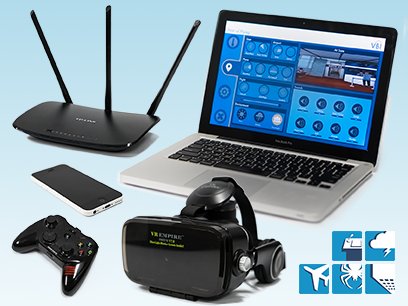«VR-based exposure therapy» (VRE) has been found effective for treating panic disorder, schizophrenia, acute and chronic pain, addictions (including smoking), social anxiety disorder, claustrophobia, agoraphobia (fear or open spaces), eating disorders, «generalized anxiety disorder» (where daily functioning becomes difficult), obsessive-compulsive disorder, chronic pain, obsessive-compulsive disorder, and even schizophrenia.

VR allows providers to «create computer-generated environments in a controlled setting, which can be used to create a sense of presence and immersion in the feared environment for individuals suffering from anxiety disorders," says lead author Jessica L. Maples-Keller, PhD, of University of Georgia.
One dramatic example is progressive exposure to frightening situations in patients with specific phobias, such as fear of flying. This typically includes eight steps, from walking through an airport terminal to flying during a thunderstorm with turbulence, including specific stimuli linked to these symptoms (such as the sound of the cabin door closing). The patient can virtually experience repeated takeoffs and landings without going on an actual flight.
VR can simulate exposures that would be costly or impractical to recreate in real life, such as combat conditions, or to control the «dose» and specific aspects of the exposure environment.
«A VR system will typically include a head-mounted display and a platform (for the patients) and a computer with two monitors — one for the provider’s interface in which he or she constructs the exposure in real time, and another for the provider’s view of the patient’s position in the VR environment," the researchers note.
However, research so far on VR applications has had limitations, including small numbers of patients and lack of comparison groups; and mental health care providers will need specific training, the authors warn.
The senior author of the paper, Barbara O. Rothbaum, PhD, disclosed one advisory board payment from Genentech and equity in Virtually Better, Inc., which creates virtual reality products.
Abstract of The Use of Virtual Reality Technology in the Treatment of Anxiety and Other Psychiatric Disorders
Virtual reality (VR) allows users to experience a sense of presence in a computer-generated, three-dimensional environment. Sensory information is delivered through a head-mounted display and specialized interface devices. These devices track head movements so that the movements and images change in a natural way with head motion, allowing for a sense of immersion. VR, which allows for controlled delivery of sensory stimulation via the therapist, is a convenient and cost-effective treatment. This review focuses on the available literature regarding the effectiveness of incorporating VR within the treatment of various psychiatric disorders, with particular attention to exposure-based intervention for anxiety disorders. A systematic literature search was conducted in order to identify studies implementing VR-based treatment for anxiety or other psychiatric disorders. This article reviews the history of the development of VR-based technology and its use within psychiatric treatment, the empirical evidence for VR-based treatment, and the benefits for using VR for psychiatric research and treatment. It also presents recommendations for how to incorporate VR into psychiatric care and discusses future directions for VR-based treatment and clinical research.
Source: http://www.kurzweilai.net/virtual-reality-therapy-found-effective-for-treating-phobias-and-ptsd



